Lilacs - The Ultimate Growing Guide from Proven Winners®
Lilac is one of the most beloved spring-blooming shrubs, valued for its hardiness, reliability, carefree nature and intoxicating fragrance
Buy lilac bushes – Order shrubs online and have them shipped right to your door
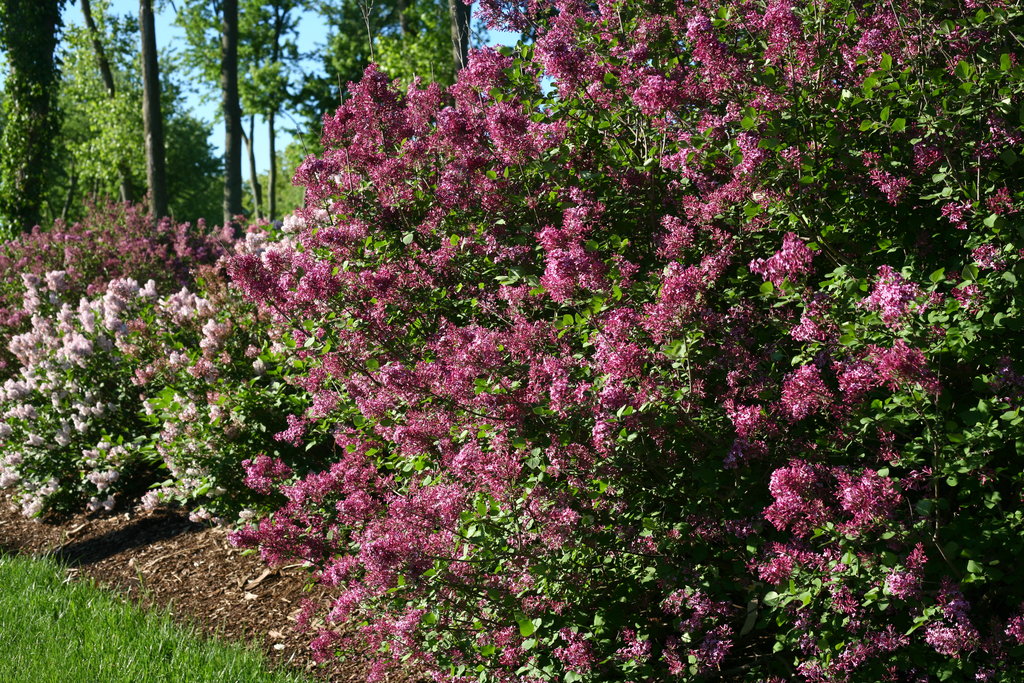
Lilacs evoke nostalgic memories of your grandmother’s garden, with sweetly fragrant flowers that are a welcome harbinger of spring. Cone-shaped clusters of tiny single or double flowers occur in shades of white, purple, lavender, pink or blue.
A staple garden shrub in northern climates, common lilac varieties are hardy in USDA zones 3-7/8. The heart-shaped deciduous green leaves and attractive growth habit make lilac bush a valuable addition to borders and foundation plantings. Lilacs can also be used as hedging, screening, as a focal point, or in containers.
PLANTING & CARING FOR LILACS
How to plant: Choose a site that receives at least 6 hours of direct sunlight. Follow these steps to growing lilacs and space plants 3 to 15 feet apart, depending on the variety.
- Loosen soil in the planting area and dig a hole twice as wide and slightly deeper than the root ball.
- Remove plant from its container and tease out roots if potbound.
- Set the plant in the hole and spread out roots.
- Backfill the hole with compost mixed in with the existing soil and tamp down slightly to remove air pockets. Water well.
Soil: Well-drained soils are imperative for lilacs; they cannot tolerate wet conditions, even for short periods. They prefer soil pH to be on the alkaline side, but tolerate neutral to slightly acidic soils as well. If growing in containers, use a high-quality all-purpose potting mix.
Watering: Provide regular water during the first growing season, until roots are established. Mature plants need little supplemental water except during extended periods of dry weather. Avoid wet or soggy conditions.
Fertilizing: If desired, apply a granular (not liquid) fertilizer formulated for woody plants in late winter/early spring.
Pruning: Lilacs bloom on old wood, so should only be pruned immediately after blooming. At that point, it can be trimmed, shaped, or thinned. Any suckers are best removed in mid-late summer, as that minimizes their recurrence. Reblooming lilacs like the Bloomerang series can be trimmed immediately after their spring bloom. Bloomerang lilacs will rebloom whether or not they are trimmed, however, many people prefer the neater look of a trimmed plant.
TRY THESE PROVEN WINNERS® VARIETIES
Add these lilac varieties to your landscape:
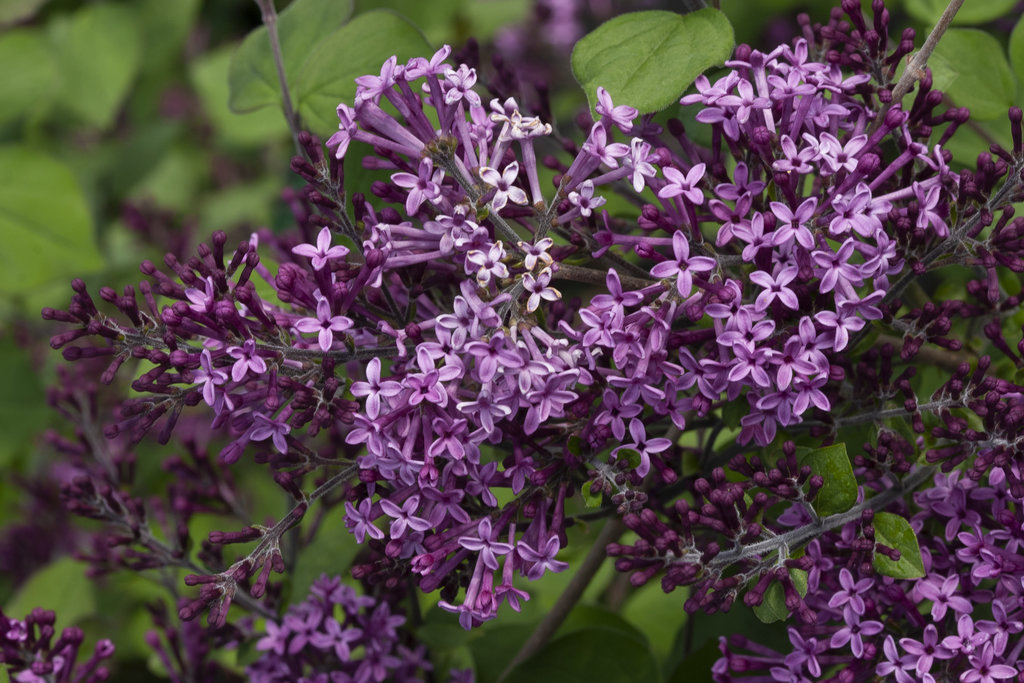 Bloomerang® Dark Purple (Syringa x) is a deer- and disease-resistant medium-sized variety with a neat rounded habit. Large dark purple buds open to lavender flowers. Plants bloom for weeks from mid to late spring, with rebloom from mid to late summer until frost. |
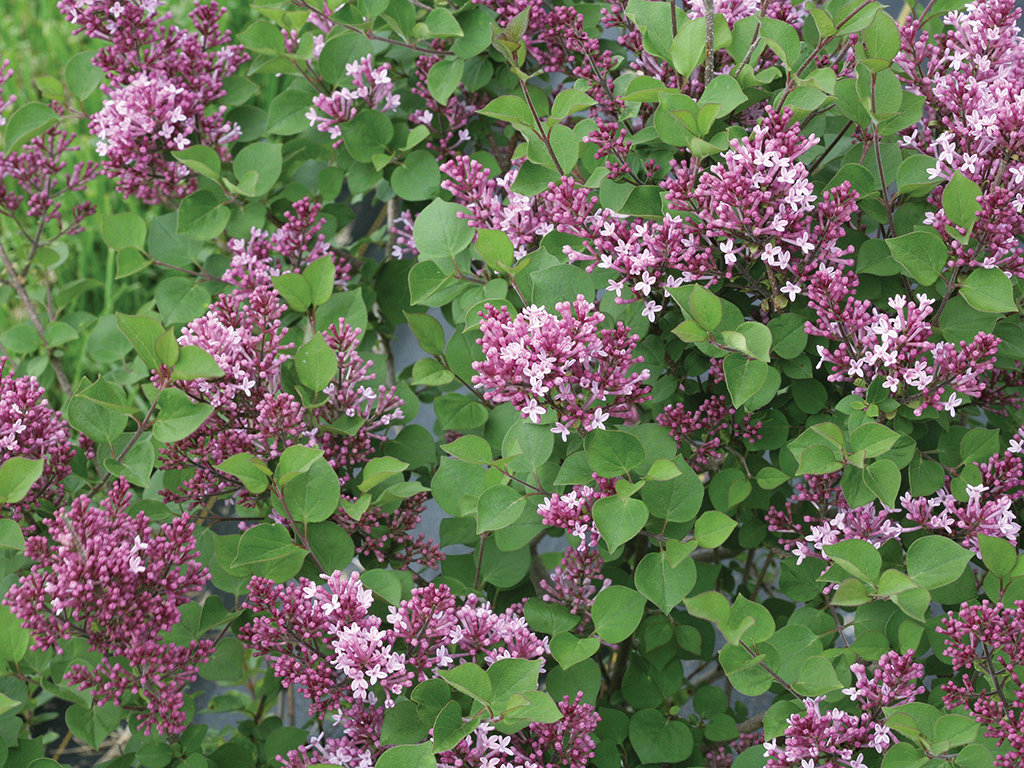 Bloomerang® Dwarf Purple (Syringa x) has a dwarf mounding habit—just 3 feet tall and wide— that is suitable for small spaces, containers and hedging. Dark lavender flower buds open to lavender blooms. Flowers appear in late spring, and again from summer into fall. Good disease and deer resistance. |
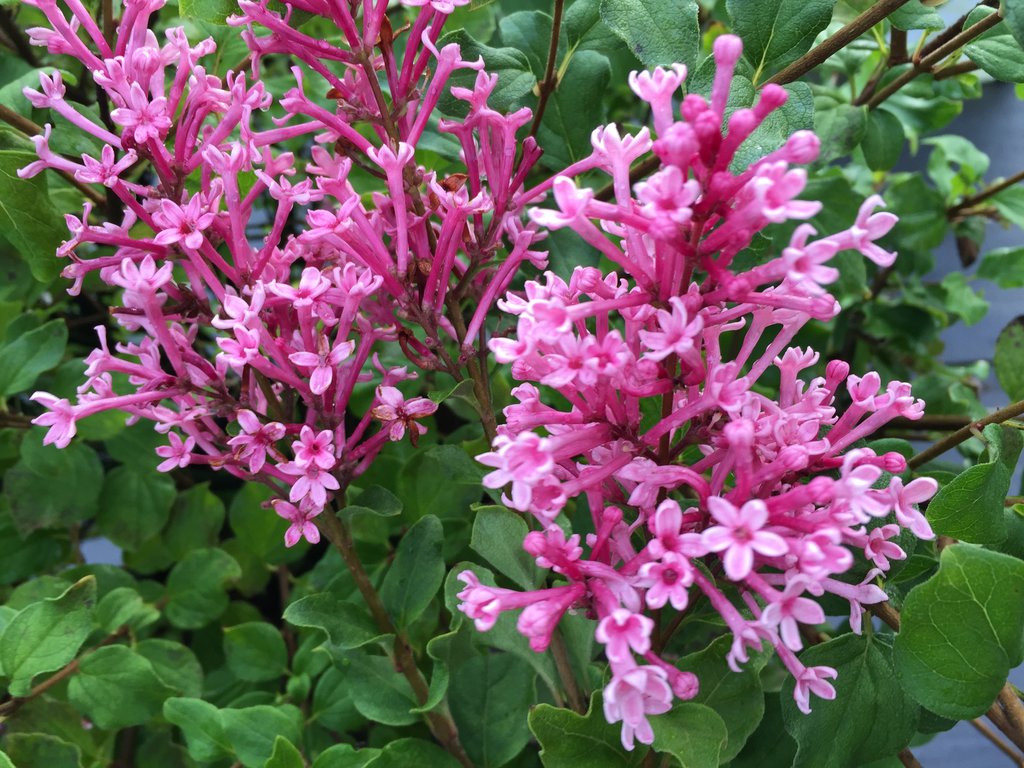 Bloomerang® Dwarf Pink (Syringa x) grows 3 feet tall and wide, with a rounded habit that’s perfect for containers, low hedging or mass plantings. Vigorous plants produce delicate bright pink flowers that are deliciously fragrant. Disease and deer resistant. |
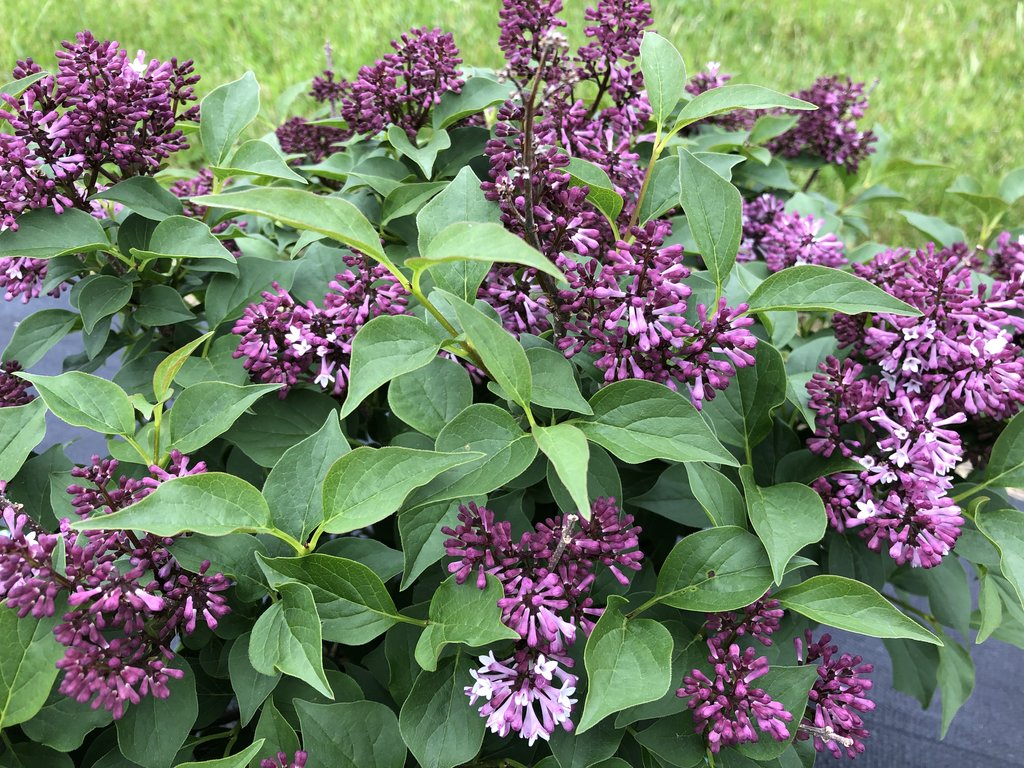 Baby Kim® (Syringa x) is a smaller dwarf variety, reaching just 2 to 3 feet tall and wide. Fade-resistant lavender flowers are produced in abundance from mid to late spring. Use this diminutive variety in a mixed border, container, or massed in the landscape. Plants have good mildew resistance. Baby Kim® (Syringa x) is a smaller dwarf variety, reaching just 2 to 3 feet tall and wide. Fade-resistant lavender flowers are produced in abundance from mid to late spring. Use this diminutive variety in a mixed border, container, or massed in the landscape. Plants have good mildew resistance. |
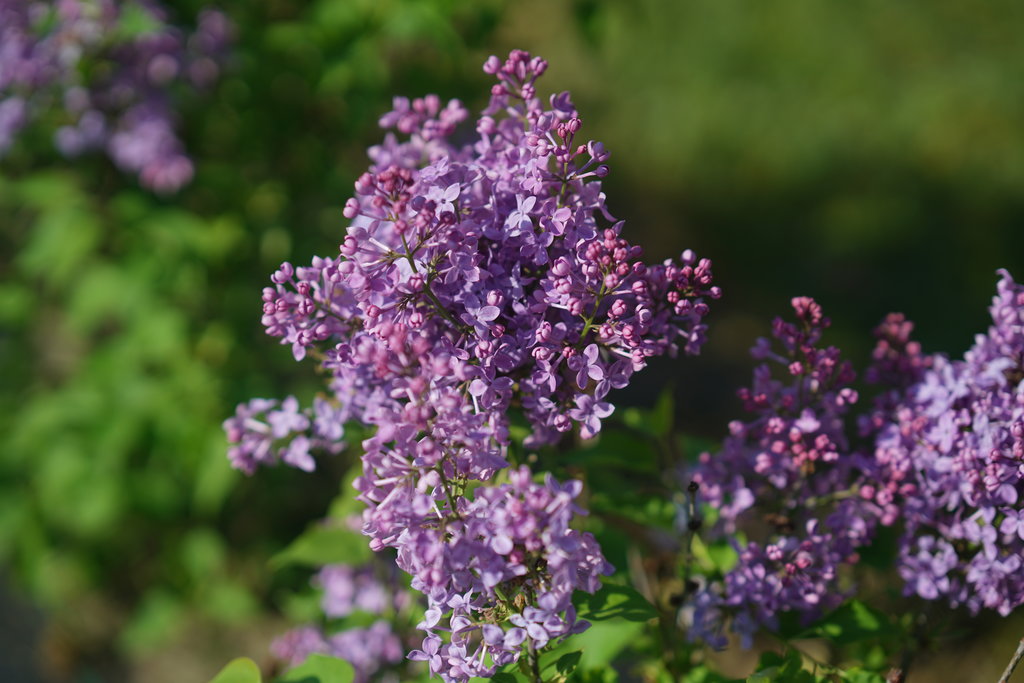 Scentara Pura® (Syringa x hyacinthiflora) is a hyancinthiflora lilac, the most fragrant type available. Pure purple flowers exude a deeply perfumed fragrance, with disease-resistant foliage that looks good even when plants are not in bloom. Plant near your home to enjoy the fragrance up close. Use this medium-sized shrub in foundation plantings, as hedging or screening. Scentara Pura® (Syringa x hyacinthiflora) is a hyancinthiflora lilac, the most fragrant type available. Pure purple flowers exude a deeply perfumed fragrance, with disease-resistant foliage that looks good even when plants are not in bloom. Plant near your home to enjoy the fragrance up close. Use this medium-sized shrub in foundation plantings, as hedging or screening. |
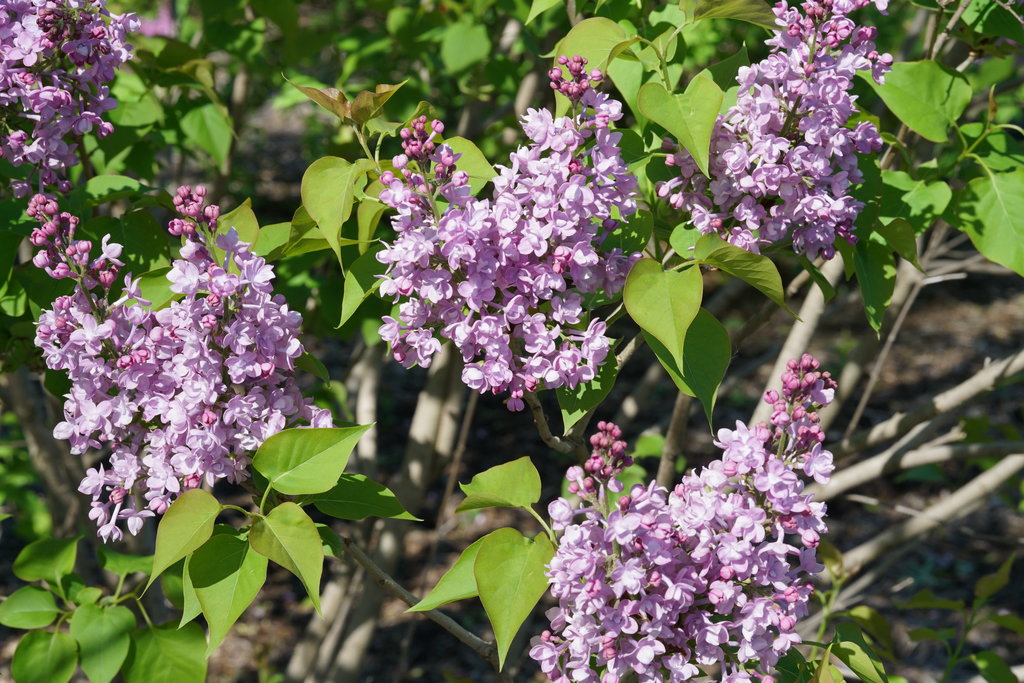 Scentara Double Blue® (Syringa x hyacinthiflora) is one of the most fragrant varieties available, with an intense scent that will perfume your entire yard. Purple-blue double flowers have a delicate seashell-like appearance, adding elegance to the landscape. Use this larger shrub as hedging, screening or as a background plant in a mixed border. Scentara Double Blue® (Syringa x hyacinthiflora) is one of the most fragrant varieties available, with an intense scent that will perfume your entire yard. Purple-blue double flowers have a delicate seashell-like appearance, adding elegance to the landscape. Use this larger shrub as hedging, screening or as a background plant in a mixed border. |
LILAC FAQ’s
When do lilacs bloom?
Lilacs flower from mid to late spring, depending on the variety. Bloomerang lilacs will rebloom from mid to late summer into fall.
When to prune lilacs?
Lilacs bloom on old wood, so they should be pruned just after flowering. If you wait until summer or later to prune, you may experience a loss of flowers the following year.
When to plant lilac bushes?
Plant them during the cooler months of spring or fall to reduce plant stress.
How fast do lilacs grow?
Average growth rate for lilacs is moderate, 1 to 2 feet per year. Dwarf varieties may grow more slowly.
Do lilacs need full sun?
Lilac bushes bloom best in full sun, which is at least 6 hours of direct sunlight per day. Too much shade will result in fewer blooms and increased risk of fungal diseases.
How big does lilac bush get?
Plant size ranges from dwarf types 2 to 3 feet tall to larger varieties 15 to 30 feet tall that can be regarded as a small tree.
Are lilacs evergreen?
Lilacs are deciduous shrubs, losing their leaves in fall.
I live in a hot climate, can I grow lilacs?
Though lilacs are very cold tolerant, they do not do well in hot areas. Even if the plant itself survives, it will bloom little if at all, because the plant needs exposure to cold temperatures, called “chilling,” in order to develop its flower buds. This typically does not occur in areas hotter than USDA zone 7 or 8 (depending on the variety – some lilacs, like the Scentara series, have reduced chilling requirements).
HOW TO USE LILAC IN YOUR LANDSCAPE
Here’s how to use lilac bush in your yard.
- Place near an entryway or along a path where the fragrance and flowers can be enjoyed up close.
- Plant a hedge of lilacs along a property line.
- Use a dwarf variety in a container, by itself or in combination with spring-blooming bulbs.
- Add lilac bush to a mixed border alongside other spring-blooming trees, shrubs, perennials and bulbs.
- Plant in an island bed surrounded by spring flowers such as columbine, phlox, daffodils and tulips.
- Add lilac to a cottage-style garden to augment other shrubs, trees and perennials.
- Plant early, middle, late and repeat-blooming varieties for a succession of seasonal color.
- Incorporate repeat-blooming varieties into a fall border.
- Use a small to medium variety in a foundation planting in combination with other shrubs that bloom at different times for season-long color.
LILAC COMPANION PLANTS
Plant lilac with other shrubs, trees, perennials and bulbs for a symphony of color.
Combine with other shrubs and foundation plants that bloom at different times, such as:
- Sonic Bloom® Pink reblooming weigela
- Double Play Big Bang® spirea
- Little Lime® panicle hydrangea
- Sunshine Blue® II bluebeard
Combine in a mixed border with:
- Golden Shadows® pagoda dogwood
- Illuminati Arch® mock orange
- ‘Sweet Summer Love’ clematis
- Happy Ever Appster™ Red Hot Returns reblooming daylily
Underplant with spring-blooming bulbs and perennials such as:
- ‘Pink Diamonds’ fern-leaved bleeding heart
- ‘Liberty’ hosta
- Dolce® ‘Wildberry’ coral bells
- ‘Pretty in Pink’ lungwort




